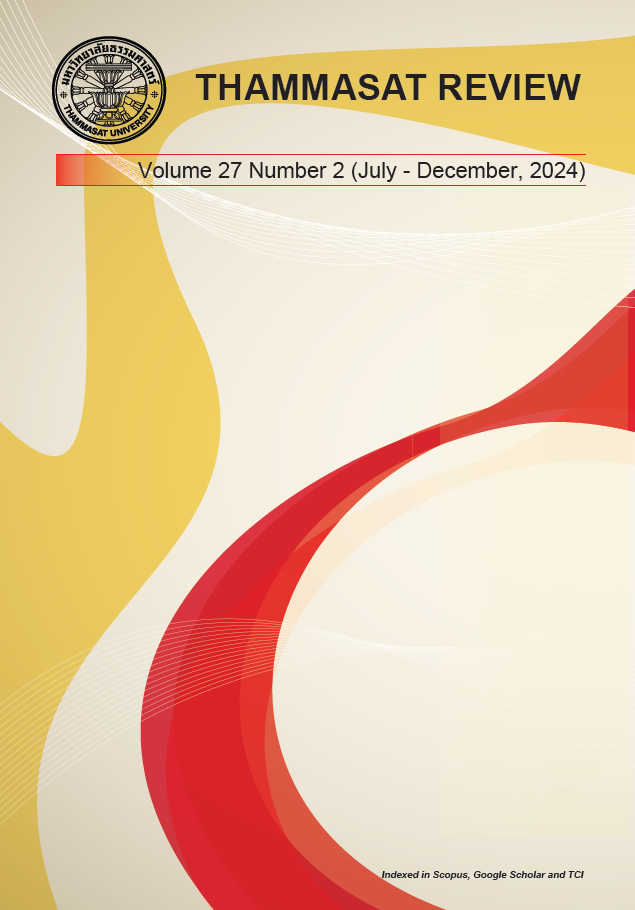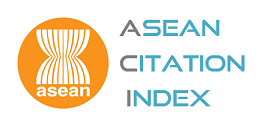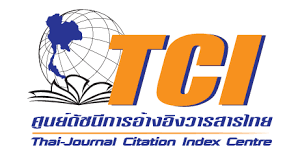Examining the Nexus of Innovation Traits, Social Influence, and Environmental Sustainability Attitudes of Consumers in Thailand: A Study of 3D-Printed Clothing Adoption Intentions
Keywords:
Behavioral, Technological Innovation, Technology Adoption, Technological Change, SignalsAbstract
This study draws from the Theory of Reasoned Action and Diffusion of Innovation Theory to explore factors influencing Thai consumers’ attitudes toward environmental sustainability (ATES): social influence, imitating others, open-mindedness, and IT domain innovativeness, and how ATES influences intention to adopt 3D-printed clothing in turn. A survey of students, faculty, and staff at a Thai university was used. The results show that social influence and open-mindedness had significant impacts on ATES, and that ATES had a significant impact on intention to adopt 3-D printed clothing. The results underscore the need for effective education and awareness programs to promote ATES and 3D-printed fashion adoption and advance the understanding of environmentally conscious consumer behavior in Thailand, an important player in the global apparel industry. The conclusions offer insights for researchers, policymakers, marketers, and fashion professionals.
References
Abrar, M., Sibtain, M. M., & Shabbir, R. (2021). Understanding purchase intention towards eco-friendly clothing for generation Y & Z. Cogent Business & Management, 8(1), 1997247.
Agarwal, R., & Prasad, J. (2000). A field study of the adoption of software process innovations by information systems professionals. IEEE Transactions on Engineering Management, 47(3), 295-308.
Ajzen, I., & Fishbein, M. (1975). A Bayesian analysis of attribution processes. . Psychological bulletin, 82(2), 261.
Al-Abrrow, H., Fayez, A. S., Abdullah, H., Khaw, K. W., Alnoor, A., & Rexhepi, G. (2023). Effect of open-mindedness and humble behavior on innovation: mediator role of learning. International Journal of Emerging Markets, 18(9), 3065-3084.
Bandura, A. (2009). Social cognitive theory of mass communication. In Media effects (pp. 110-140). Routledge.
Bertola, P., & Teunissen, J. (2018). Fashion 4.0. Innovating fashion industry through digital transformation. Research Journal of Textile and Apparel, 22(4), 352-369.
Cegarra-Navarro, J. G., Papa, A., Garcia-Perez, A., & Fiano, F. (2019). An open-minded strategy towards eco-innovation: A key to sustainable growth in a global enterprise. Technological Forecasting and Social Change, 148, 119727.
Chen, X., Chen, R. R., Wei, S., & Davison, R. M. (2023). Herd behavior in social commerce: understanding the interplay between self-awareness and environment-awareness. Internet Research.
Chen, X., Li, Y., Davison, R. M., & Liu, Y. (2021). The impact of imitation on Chinese social commerce buyers’ purchase behavior: The moderating role of uncertainty. International journal of information management, 56, 102262.
Chin, W. W. (Ed.). (1998). The partial least squares approach for structural equation modeling. Associates Publishers.
Chwialkowska, A. (2019). How sustainability influencers drive green lifestyle adoption on social media: the process of green lifestyle adoption explained through the lenses of the minority influence model and social learning theory. Management of Sustainable Development, 11(1), 33-42.
Cislaghi, B., & Heise, L. (2020). Gender norms and social norms: differences, similarities and why they matter in prevention science. Sociology of health & illness, 42(2), 407-422.
Damanpour, F., & Gopalakrishnan, S. (1998). Theories of organizational structure and innovation adoption: the role of environmental change. Journal of Engineering and technology management, 15(1), 1-24.
De Groot, J. I., & Steg, L. (2010). Relationships between value orientations, self-determined motivational types and pro-environmental behavioural intentions. Journal of Environmental Psychology, 30(4), 368-378.
de Lima, E. B., Costa, C. S. R., & Félix, G. R. (2019). Guilt and pride emotions and their influence on the intention of purchasing green products. Consum. Behav. Rev, 3, 70-84.
Djafarova, E., & Foots, S. (2022). Exploring ethical consumption of generation Z: Theory of planned behaviour. Young Consumers, 23(3), 413-431.
Durmaz, A., Dursun, İ., & Kabadayi, E. T. (2020). Mitigating the effects of social desirability bias in self-report surveys: Classical and new techniques. In Applied social science approaches to mixed methods research (pp. 146-185). IGI Global.
Flynn, L. R., & Goldsmith, R. E. (1993). A validation of the Goldsmith and Hofacker innovativeness scale Educational and Psychological Measurement 53, 1105-1116.
Fortune Business Insights. (2024, March). 3D Printing Market Size, Share & Industry Analysis. https://www.fortunebusinessinsights.com/industry-reports/3d-printing-market-101902
Hair, J. F., Ringle, C. M., & Sarstedt, M. (2011). PLS-SEM: Indeed a Silver Bullet. Journal of Marketing Theory and Practice, 19(2), 139–152. https://doi.org/10.2753/MTP1069-6679190202
Karlsson, S., & Lindström, A. (2020). Is knowledge enough? : A qualitative study investigating the knowledge-action gap of environmental science students. https://urn.kb.se/resolve?urn=urn:nbn:se:liu:diva-167185
Niinimäki, K., Peters, G., Dahlbo, H., Perry, P., Rissanen, T., & Gwilt, A. (2020). The environmental price of fast fashion. Nature Reviews Earth & Environment, 1(4), 189–200. https://doi.org/10.1038/s43017-020-0039-9
Sarstedt, M., Hair Jr., J. F., & Ringle, C. M. (2023). “PLS-SEM: indeed a silver bullet” – retrospective observations and recent advances. Journal of Marketing Theory & Practice, 31(3), 261–275. Business Source Complete. https://doi.org/10.1080/10696679.2022.2056488
Vantamay, N. (2018). Investigation and recommendations on the promotion of sustainable consumption behavior among young consumers in Thailand. Kasetsart Journal of Social Sciences, 39(1), 51–58. https://doi.org/10.1016/j.kjss.2018.01.007
Watchravesringkan, K. (Tu), Karpova, E., Nelson Hodges, N., & Copeland, R. (2010). The competitive position of Thailand’s apparel industry: Challenges and opportunities for globalization. Journal of Fashion Marketing and Management: An International Journal, 14(4), 576–597. https://doi.org/10.1108/13612021011081751
Wolf, J. (2023). Better Brands: Is Patagonia Sustainable? Sustainable Review. Retrieved November 5 from https://sustainablereview.com/better-brands-is-patagonia-sustainable/
Xu, X., Xia, M., & Pang, W. (2022). Do all roads lead to Rome? Authenticity, openness to experience, and risk-taking relate to general and malevolent creativity differently. Current Psychology, 1-8.
Young, W., Hwang, K., McDonald, S., & Oates, C. J. (2010). Sustainable consumption: green consumer behaviour when purchasing products. Sustainable development, 18(1), 20-31.
Zhai, Y., Ding, Y., & Zhang, H. (2021). Innovation adoption: Broadcasting versus virality. Journal of the Association for Information Science and Technology, 72(4), 403-416.
Zhao, X. (2022). Virtual Fashion Influencers: towards a more sustainable consumer behaviour of Generation Z?
Downloads
Published
How to Cite
Issue
Section
License
Copyright (c) 2024 Thammasat Review

This work is licensed under a Creative Commons Attribution-NonCommercial-NoDerivatives 4.0 International License.
The opinions and ideas expressed in all submissions published in Thammasat Review are solely that of the author(s) and do not necessarily reflect that of the editors or the editorial board.
The copyright of all articles including all written content and illustrations belong to Thammasat Review. Any individuals or organisation wishing to publish, reproduce and distribute a particular manuscript must seek permission from the journal first.






